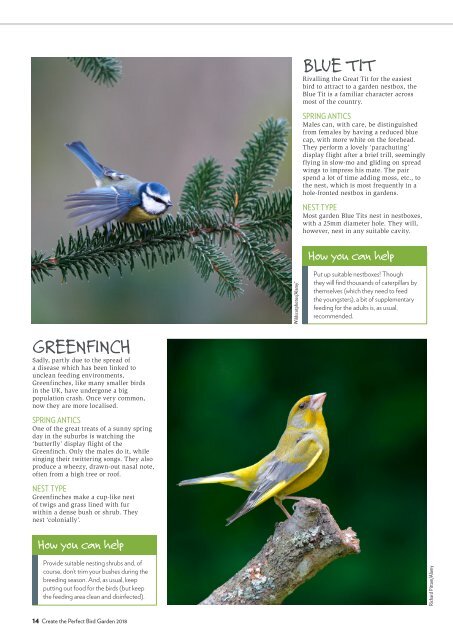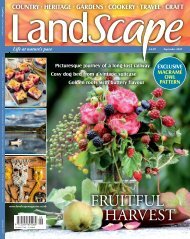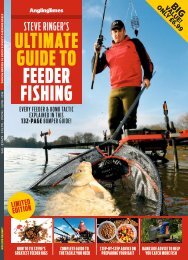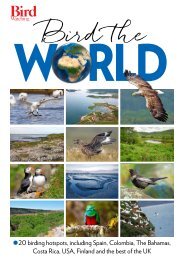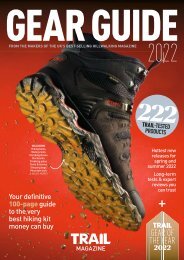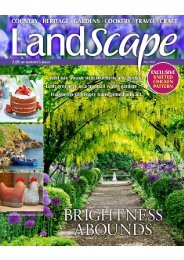Create successful ePaper yourself
Turn your PDF publications into a flip-book with our unique Google optimized e-Paper software.
BLUE TIT<br />
Rivalling the Great Tit for the easiest<br />
bird to attract to a garden nestbox, the<br />
Blue Tit is a familiar character across<br />
most of the country.<br />
SPRING ANTICS<br />
Males can, with care, be distinguished<br />
from females by having a reduced blue<br />
cap, with more white on the forehead.<br />
They perform a lovely ‘parachuting’<br />
display flight after a brief trill, seemingly<br />
flying in slow-mo and gliding on spread<br />
wings to impress his mate. The pair<br />
spend a lot of time adding moss, etc., to<br />
the nest, which is most frequently in a<br />
hole-fronted nestbox in gardens.<br />
NEST TYPE<br />
Most garden Blue Tits nest in nestboxes,<br />
with a 25mm diameter hole. They will,<br />
however, nest in any suitable cavity.<br />
How you can help<br />
GREENFINCH<br />
Sadly, partly due to the spread of<br />
a disease which has been linked to<br />
unclean feeding environments,<br />
Greenfinches, like many smaller birds<br />
in the UK, have undergone a big<br />
population crash. Once very common,<br />
now they are more localised.<br />
SPRING ANTICS<br />
One of the great treats of a sunny spring<br />
day in the suburbs is watching the<br />
‘butterfly’ display flight of the<br />
Greenfinch. Only the males do it, while<br />
singing their twittering songs. They also<br />
produce a wheezy, drawn-out nasal note,<br />
often from a high tree or roof.<br />
NEST TYPE<br />
Greenfinches make a cup-like nest<br />
of twigs and grass lined with fur<br />
within a dense bush or shrub. They<br />
nest ‘colonially’.<br />
Wildscotphotos/Alamy*<br />
Put up suitable nestboxes! Though<br />
they will find thousands of caterpillars by<br />
themselves (which they need to feed<br />
the youngsters), a bit of <strong>supp</strong>lementary<br />
feeding for the adults is, as usual,<br />
recommended.<br />
How you can help<br />
Provide suitable nesting shrubs and, of<br />
course, don’t trim your bushes during the<br />
breeding season. And, as usual, keep<br />
putting out food for the birds (but keep<br />
the feeding area clean and disinfected).<br />
Richard Pittam/Alamy<br />
14 Create the Perfect Bird Garden <strong>2018</strong>


